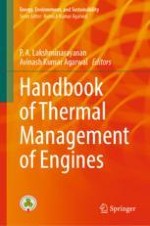2022 | OriginalPaper | Buchkapitel
15. Low-Temperature Operation: Impact of Cold Temperature on Euro 6 Passenger Car Emissions
verfasst von : P. A. Lakshminarayanan
Erschienen in: Handbook of Thermal Management of Engines
Verlag: Springer Singapore
Aktivieren Sie unsere intelligente Suche, um passende Fachinhalte oder Patente zu finden.
Wählen Sie Textabschnitte aus um mit Künstlicher Intelligenz passenden Patente zu finden. powered by
Markieren Sie Textabschnitte, um KI-gestützt weitere passende Inhalte zu finden. powered by
